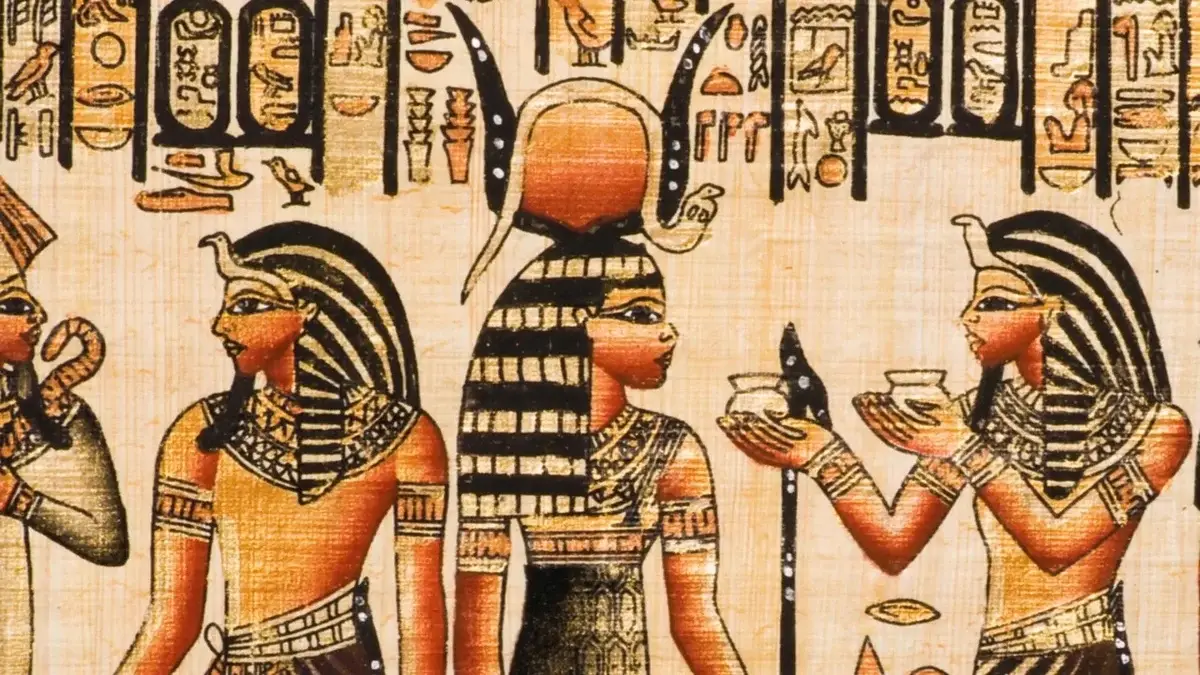Believe it or not, alcohol is one of the most influential and game-changing creations that mankind has ever created in its history. Since prehistoric times, alcohol has been a part of the everyday lives of our ancestors.
Whether it was by pure accident or the product of the curiosity of humans — the same curiosity that helped our species develop into what it is known today — the birth of alcohol and the formulation of different alcoholic beverages remains to be one of the most creative inventions of humans up to today.
Initially serving as an instrument used for religious or cultural purposes, alcohol slowly integrated itself into society as a means of recreation for many people. While some traditions and practices have continued to thrive in today’s norms, alcohol remains to be one of the most beloved drinks in many nations nowadays.
Starting in ancient times, the practice of brewing and consuming alcohol has been passed down throughout many generations — and since its development has changed hands for so long, a lot of improvements have been made to alcohol in general.
Many takes on the basic chemical composition of alcohol have also been spread out to many curious minds who have successfully crafted their own take on alcoholic beverages. The result is a huge collection of alcoholic drinks that vary from culture to culture, all blending together to create a wonderful harmony of flavor and aroma.
However, to enjoy and appreciate alcohol to its fullest, a step back into the early beginnings of the drink all the way down to contemporary times is important. A complete exploration of alcohol’s history is recommended to fully appreciate the recreational beverage that has been a key part of most people’s enjoyment and leisure in life.
Table of Contents
ToggleAncient Origins
Going back to the ancient origins of alcohol, the concept of alcohol as being caused by the fermentation of particular ancient fruits was not primarily discovered by humans. In fact, studies have shown that animals were the first living organisms to explore and consume fermented fruits as a means of getting tipsy or intoxicated.
While further research is being put into discovering the actual origins of alcohol and when did humanity first get its hands on brewing alcoholic beverages, one of the oldest documented pieces of evidence of alcohol being existent in human society was the excavated traces of beer which was found in an ancient burial site located in a cave in the city of Haifa (located in modern-day Israel) that dates back to as early as 13,000 BC. What was found in this burial site was a prehistoric brewery that was used to create alcohol that was made out of wheat and barley.
It was even proposed by historians and other experts that one of the key motivations for the development of agriculture in human society was because of the interest of the ancient people back then to reproduce alcoholic beverages. Indeed, alcohol has made a huge impact on early human practices as early as back then.
China

One of the earliest regions in the world to have ever created and developed alcoholic beverages was Ancient China. Experts had dated traces of alcohol being brewed in China as early as 7000 BC when jars were discovered in a settlement from the Neolithic period located in central China named Jiahu.
The Jiahu jars contained small amounts of alcohol that were created using several raw ingredients, such as rice, honey, and fruit, which underwent a fermentation process. As civilization continued to develop in China, alcohol had served a larger role in society since it was first discovered in the nation.
One of the core beliefs in Ancient China was that alcohol was to be consumed in moderation and not to be abused. It was widely believed at the time that consuming alcohol wisely was a mandate that was prescribed to people by heaven.
Besides being used during occasions such as rituals and feasts, alcohol also played other roles in the Ancient Chinese period, such as a political tool in order to boost the authority of elite figures in society, such as kings.
Persia

Ancient Persia was another region in world history that was able to make early developments in brewing alcohol and discovering alcoholic beverages. Recent findings by historians have traced back the presence of alcohol in Ancient Persia as early as 5400 BC when artifacts were found in the excavation site known as Hajji Firuz Tepe, which was located in the Zagros Mountains Region of what is now known today as Iran.
Historians at the site were able to piece out the story of how the earliest evidence of alcohol in Ancient Persia came to be. According to research, after the early Persians had settled themselves in the region after preparing the land for farming, they had prepared a convenient system for wine-making, which provided comfort during colder seasons and a form of relaxation after a work-filled day.
Evidence of tartaric acid in the jars discovered in the ancient settlement had further confirmed that Ancient Persians were indeed involved in the practice of storing grapes for wine-making — or in a more general sense, producing an alcoholic beverage.
Egypt
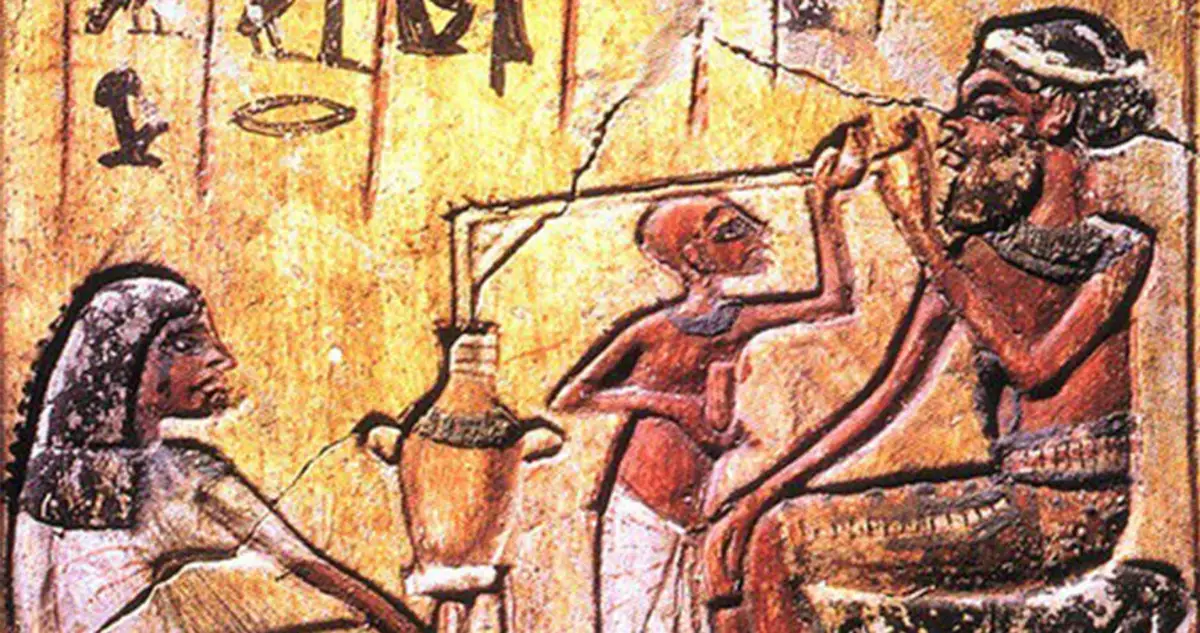
One of the most significant and widely known ancient cultures to date is the civilization of Ancient Egypt. During this time, more brewing processes were beginning to pop up as a result of humanity’s discovery of alcohol and how it was made.
Earlier traces of alcohol in Ancient Egypt date back as early as 3400 BC in the city of Hierakonpolis where evidence of brewing processes was also documented. Artifacts that were excavated at the site showed a brewing system in place that produced over 300 gallons of beer per day.
The Ancient Egyptians had plenty of motivations for producing alcoholic beverages at the time. But most of these motivations can be traced back to cultural and religious reasons. Alcoholic drinks such as beer and wine were offered to gods such as Osiris, a popular god among the people.
The Ancient Egyptians were able to create over 17 types of beer and 24 types of wine. While this is the case, beer was more often than not the common drink for workers back then. And besides being used for leisure, alcoholic beverages during this period were also used for several reasons, such as rituals, medicine, nutrition, and even for funerals.
Babylon
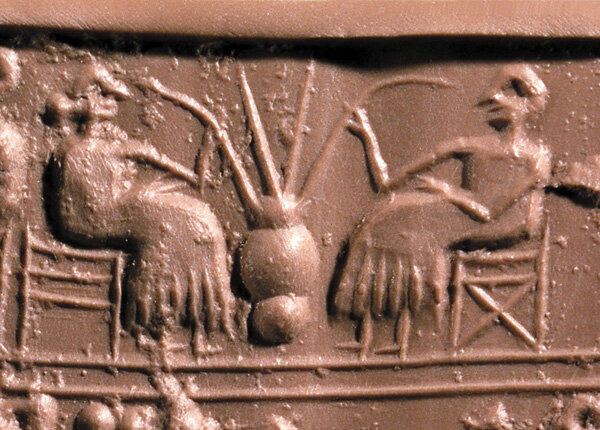
The Babylonian civilization also paid significant attention to their alcohol production processes. Contrary to the previous civilizations mentioned in this article, the Babylonians had taken a liking primarily towards beer as their go-to alcoholic beverage.
Dating back to 2700 BC, the Babylonians associated their alcohol production with their religious beliefs. While beer was the major alcoholic drink in their society, the Babylonians still prayed to wine deities and even wine goddesses.
Both beer and wine were offered in their religious rituals. And as of 1750 BC, the Code of Hammurabi — also known as one of the oldest versions of a code of laws in human history — contained regulations that directly addressed alcohol and its consumption.
While intoxication or getting drunk from excessive alcohol consumption was not directly addressed in the list of laws in Babylonian society, getting wasted still wasn’t a good look for anyone back then and was generally frowned upon by the public.
India

Many historians believe that the practice of distillation, or the separation of components between alcohol and water, originated in Ancient India. As of 3000 BC, sura, a particularly strong alcoholic beverage, was being produced by the early Indian civilization through an earlier version of alcohol distillation.
Made out of wheat, sugar cane, grapes, assorted fruits, and rice meal, sura had a high alcoholic content and was a particular favorite among the warrior and peasant classes in the Indian civilization back then. Sura also had several other purposes, such as playing a role in religion and medicine due to the strong anesthetic nature of the drink.
However, the view toward alcoholic beverages in the civilization was scattered. Some people saw alcohol as serving beneficial purposes in society, but other documents that were discovered by experts point towards the general belief among the Ancient Indians that excessive alcohol consumption was considered immoral.
Classical Antiquity Period
Classical Antiquity, simply known as the Classical Period, was another turning point during the development of alcohol and the several beverages that were created after its discovery and transformation throughout the centuries.
Generally described as a time of significant improvement in the Greek and Roman civilizations, the Classical Period was also a time of improvement and further spread of alcohol and its brewing processes among the people who lived at the time.
Influencing many areas of society, such as art and religion, alcohol was once again a major player in the development of human civilization during this period in history.
Greeks
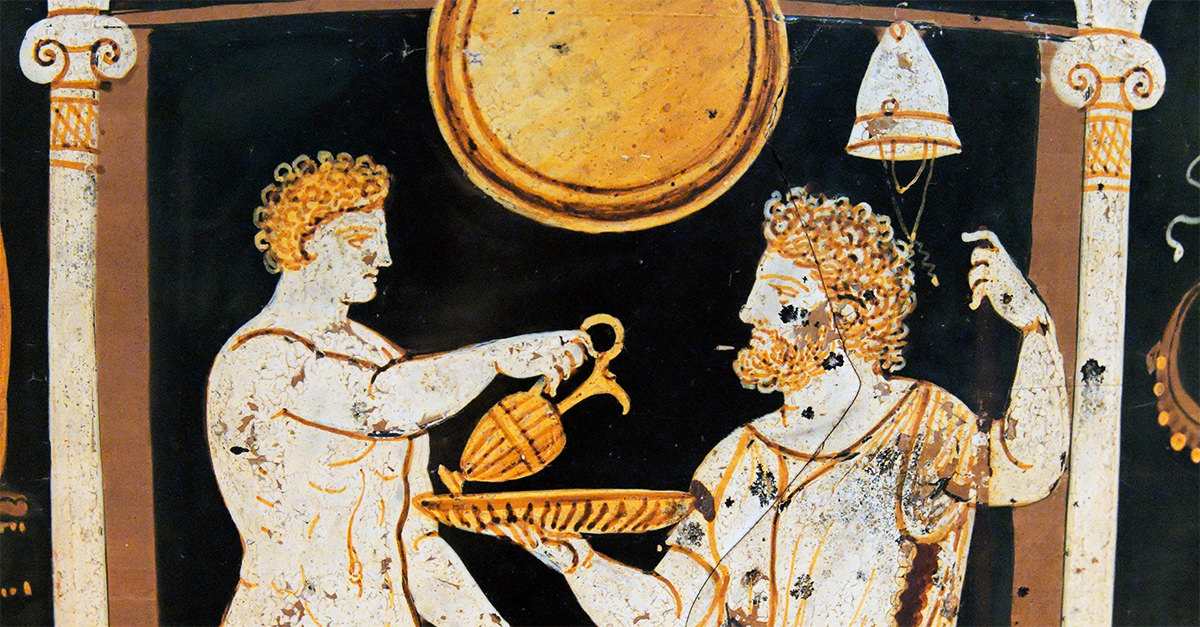
Recovered artifacts that date back to the time of Ancient Greece had confirmed proof of alcohol being integrated into their society back then to as early as 2000 BC. Also known as the Hellenic Peninsula, the Ancient Greeks were able to get their hands on the wine-making process during this period in history.
One of the first types of alcohol that gained massive popularity among the Ancient Greeks was mead — a beverage that was produced through the mixture of honey and water, among many other components that transformed the drink into something alcoholic.
In around 1700 BC, the process of producing wine became a staple in Greek society. And, as with the other civilizations and cultures that began to develop during the time period, wine was used for a variety of reasons, such as religious rituals, a part of the daily meal sets, and even for medicinal purposes as well.
Since alcohol became a main part of their everyday lives and a symbol of culture, the Ancient Greeks believed that those who did not drink alcohol were either barbarians or people who had no ounce of class.
Romans

It was not a secret that the Ancient Romans borrowed some of their practices when it came to alcohol from Ancient Greece. Another civilization that made up the Classical Period, Ancient Rome was another period in history that was a starting point for the blooming of humanity in terms of knowledge, culture, and the arts.
Of course, alcohol is also part of this period of development. Similar to the Greeks, the Romans had initially enjoyed their alcoholic drinks moderately. However, as time passed by, the culture of Ancient Rome began to shift into more abusive practices when alcohol was concerned.
Excessive drinking was encouraged — and the growing practice was quickly spreading to the Roman people, so much so that they consumed large amounts of food and wine, only to vomit it out again so that there was more space to drink and eat again.
Drinking games were also commonplace in Roman society, and with alcohol being a source of entertainment at this point in time, beer and wine had imposed an even greater influence on their society back then.
Native American Period
Past the Classical Period, another civilization that had its own take on alcohol was the Native Americans. Before the arrival of European colonizers, Native America was yet another starting point for different variations of alcoholic beverages that were cultivated.
Some of the alcoholic drinks produced by the Native Americans were primarily used for ceremonial purposes. Therefore, the alcohol content was not as strong as the beverages produced by other civilizations. The different tribes in Native America had developed all kinds of alcoholic drinks, with some versions surviving up to this day.
Some of the alcoholic drinks that the Native Americans were able to come up with include pulque (fermented sap of the agave plant), tiswin (drink brewed from corn which was usually used for ceremonial purposes), cacao wine (extracted from the cocoa tree), and tepache (fermented from pineapples).
As mentioned previously, alcoholic drinks among the Native American tribes were usually mild, so there was no need for any laws to regulate the consumption of alcohol. However, things quickly changed for the civilization when the Europeans arrived.
Coming from a background of excessive drinking and enjoying hard drinks, the European colonizers introduced regular drinking patterns to the natives when they traded the alcohol they possessed with resources from the Native Americans, such as fur.
Medieval Age
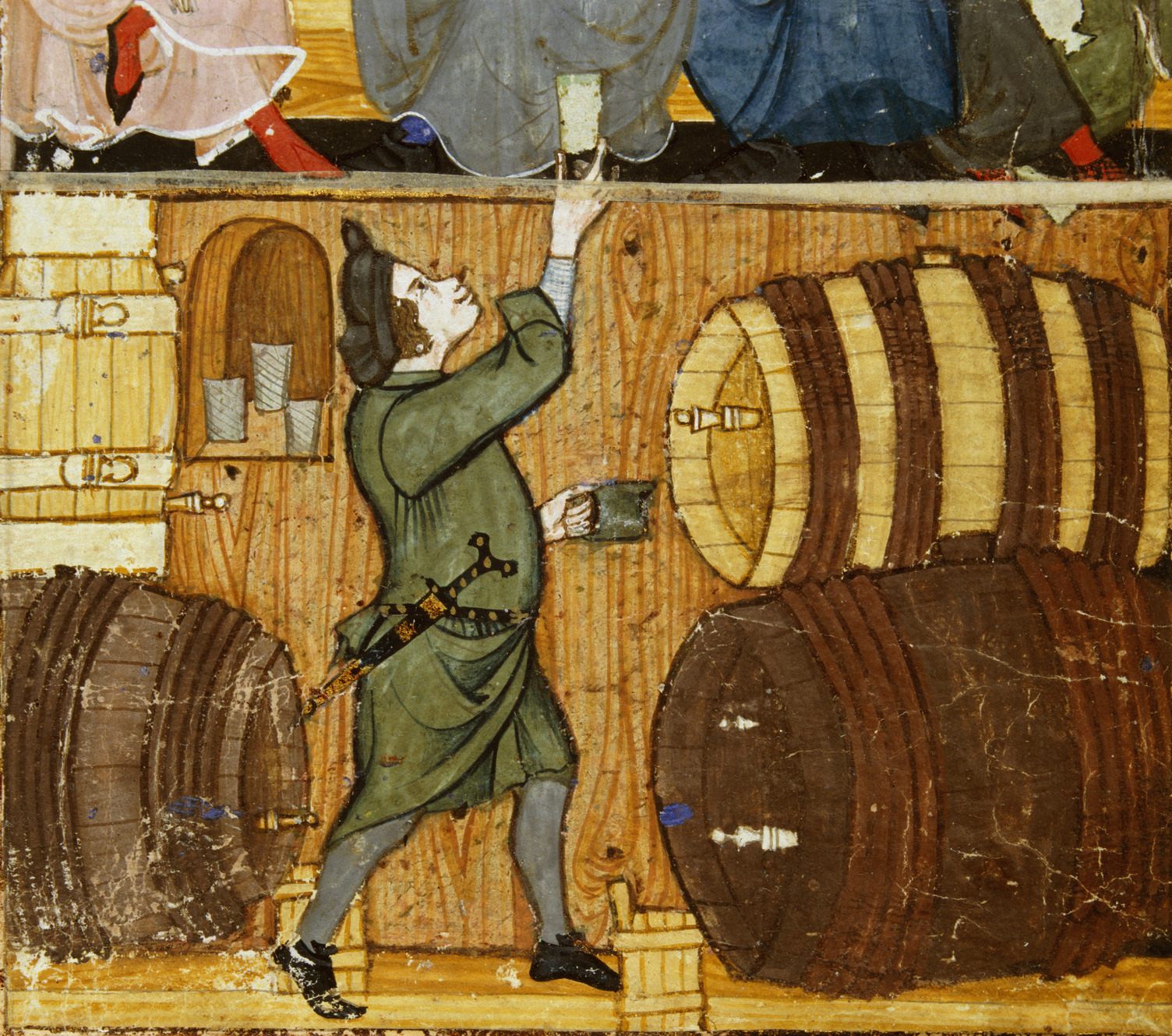
The Medieval Age, commonly referred to as the Middle Ages, was a period in world history that began with the fall of Rome and was a precursor to the modern ages. The fall of empires that were built during the Classical Antiquity period led to both the possibility of established cultures and practices being erased and the birth of new ones to take their place.
Obviously, the alcohol industry is no exception to this major shift in history. A radical change was beginning to dawn on alcohol itself. From all corners of the world, alcohol’s mark in society was undergoing a transformation.
Developments in the East
In the East, the limits of alcohol have been expanding since the dawn of the Medieval Period. Specifically in the Middle Eastern region, chemists such as Jābir ibn Ḥayyān (who was also known as the Father of Arabic Chemistry) and Abu Bakr al-Razi, have begun exploring several distillation techniques that would affect alcohol production in the future.
Distillation of alcohol was also evident in other regions during this time period in the East, such as China and India. In the Chinese area, excavations in the Hebei province have uncovered evidence of distillation occurring in the nation as early as the 12th century.
In Medieval India, the distillation of alcoholic beverages started to pick up as soon as the discoveries of the Middle Eastern civilization arrived in the nation sometime during the 14th century when the country was under the rule of the Delhi Sultanate.
Distilled wine was a common trading commodity during the Medieval Period in Eastern nations. This further proves the significance of alcohol in the everyday lives of the people who lived back then.
Evolution in the West
Surely enough, the Western regions of the world were also developing and discovering their own takes on alcohol and beverages that were possible from the constant experimentations.
Alcohol was, unsurprisingly enough, the staple drink for everyone who lived during the Medieval Period in the West — especially in Medieval Europe. With the distillation practices carrying over from the Middle East all the way to the West, the public soon got their hands on a more improved version of the basic formula for alcohol.
At one point in time, people at the time even believed that alcohol was much better than water. Distilled wine was still a staple in regions such as France, where grapes were regularly grown. In the Northern European area, alcohol of a finer quality was reserved for members of society who belonged to higher classes, such as the nobles.
Beer or ale was the preferred drink of commoners. And before the discovery of including hops as a primary ingredient in alcohol, beverages at the time were usually prepared and drank as soon as possible so as not to let the drink spoil.
Modern Period
Not long after the previous periods in history, the Modern Period eventually settled in. Known as a time when innovations and other discoveries were either developed or improved, the Modern Period was yet another critical turning point for the growth of the alcohol industry all over the world.
While alcohol was already a huge part of everyday society, the presence of alcoholic beverages during the Modern Period took up an even more important role in certain historical events that would forever change the course of nations and cultures. The roles of alcoholic beverages, besides serving as a form of leisure, would still last throughout this period in world history.
16th Century Britain & England

From the 16th century all the way up to the 17th century, alcohol continued to develop and play a major part in commerce and other daily activities in areas such as Britain and England.
During this time, the effects and general impact of alcoholic beverages among people have been one of the most discussed topics, especially when it came to regulating the consumption of alcoholic drinks since the popularity of alcohol has been very widespread at this point in time.
Alcohol became such a beloved drink among the masses during the 16th century in Britain that people even drank beer during breakfast since they believed that drinking the beverage was a healthier option compared to water.
Going with the idea of alcohol being so widely accepted for daily use, it’s not a surprise to see alcoholic drinks being rooted so deeply among the British masses for other uses. And predictably enough, alcohol abuse was a regular instance.
Alcoholism was so all over the place in Britain that the government had to step in and introduce laws that would regulate the rapidly growing alcohol industry. Queen Elizabeth I herself had to ban one type of alcoholic beverage called the ‘double double beer’, which had a particularly strong kick that knocked people out.
Public humiliation and other punishments were dealt out to people accused of extreme drunkenness. Whether it was a commoner or a member of the nobility, when it came to policies set against alcohol abuse, the law was always sure to get the message across.
17th Century Britain & England
In the 17th Century, particularly during 1606, the Parliament of England passed ‘The Act to Repress the Odious and Loathsome Sin of Drunkenness.’ In response, brewers who made alcohol had begun resorting to creating loopholes to get ahead of the law.
Writers also documented that wine was considered medicinal; additionally, hops — a component used to extend the life of alcoholic beverages — was naturally a medicinal plant. Using this knowledge to their advantage, many alcohol suppliers began mixing their drinks with wine in order to keep their business up and running despite the presence of strict laws regulating the production of their inventory.
The Thirteen Colonies
Alcoholic beverages also had a major influence on the fate of The Thirteen Colonies, also known as the ‘Thirteen American Colonies’ — a group of colonies that would go on to become the United States of America.
The ‘Mayflower’, a ship that had the first Pilgrims onboard, was popularly known to have a huge supply of beer compared to water, and with good reason. Back then, water was not as safe, and there were no sanitary procedures set to make sure that drinking water was relatively safe and harmless.
Therefore, beer became the essential drink for the passengers of the Mayflower. From medicinal purposes to providing energy after a hard day of work, the first settlers of America accepted alcohol as part of everyday life.
Nonetheless, the people of Colonial America believed in moderation as well. Religious beliefs enforced the practice of drinking within one’s means only. Alcohol was viewed as a gift from God that was not to be abused.
19th – 20th Century America

Alcohol’s role during the 19th and 20th centuries in America was still a significant one. Coming from a previous time period where even the Founding Fathers took a special liking to alcoholic drinks, it’s not a surprise to see the love for alcohol carry on to the succeeding centuries.
During the Civil War, alcohol consumption was commonplace among soldiers who were stationed in camps or large cities. Doctors used alcohol for medications, and priests used wine in their ministries. Alcohol was also the drink of choice during celebrations such as the 4th of July and New Year’s Eve.
During the early 1800s, the Temperance Movement — a movement that sought to reform alcohol regulation laws — was beginning to pick up among the public, especially middle-class citizens. Blaming alcohol for the growing number of reports concerning violent crimes, supporters of the Temperance Movement appealed for stricter rules when it came to alcohol abuse.
The effect of the Temperance Movement would soon show its full impact when the Volstead Act was enacted in 1919. In summary, this act, otherwise known as the ‘National Prohibition Act’, banned the production and sale of alcoholic beverages in the entire United States.
Surely enough, the enactment of the Prohibition Act led to a lot of controversies both among businesses involved with the alcohol industry and the general masses themselves. Crimes due to illegal smuggling and gang-related activities revolving around alcohol were rampant, and dangerous alternatives to alcohol were introduced to the market,
In 1966, Prohibition was eventually lifted due to the law causing more harm than good and alcohol regulation was gradually handed over to more local government units for them to handle in their own respective communities.
21st Century
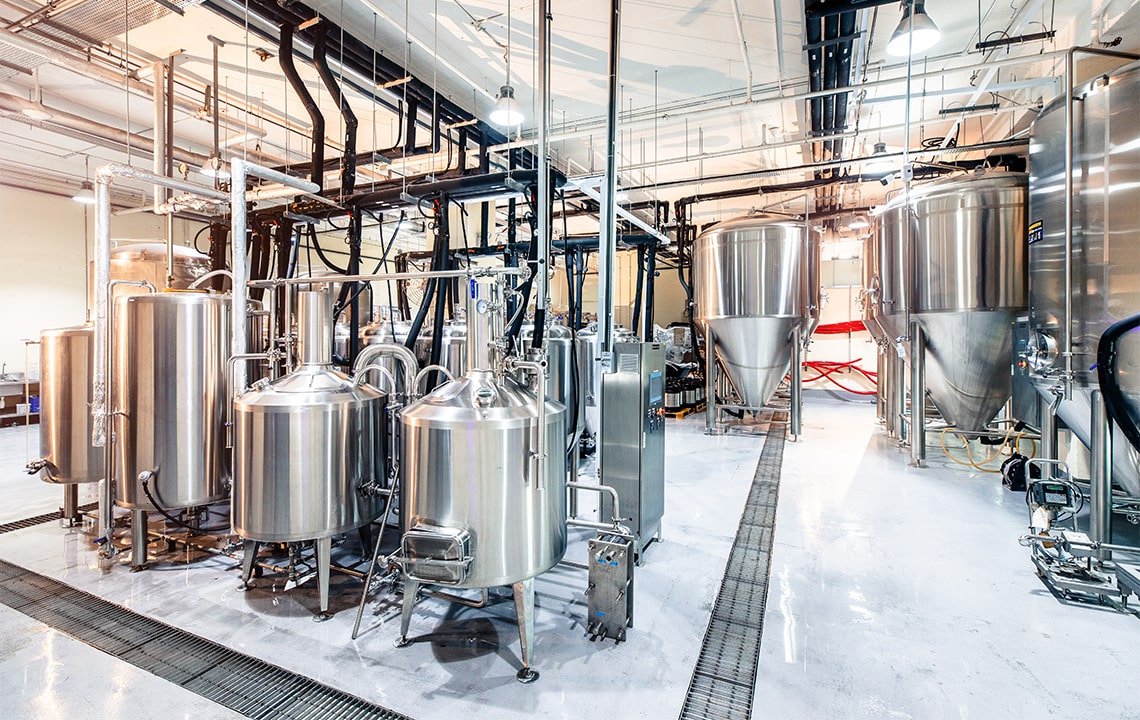
The 21st century became a time of further innovation and advancements in the alcohol industry. The rapid growth of alcoholic beverage production can be credited to the major leaps in technology and other discoveries during this time. The 21st century was indeed a game-change for alcohol producers worldwide.
Key themes such as globalization and capitalism were at an all-time high during the turn of the 21st century, and the alcohol industry is one of the industries directly affected by this change. At this point in human history, mass production was a norm, and the huge advancements in types of machinery made the distribution of alcohol all over the world even more efficient.
Globalization
Globalization is defined as the phenomenon where sectors such as businesses gain international influence and operations are elevated to an international level. And when the 21st century began, the alcohol industry was at the top of its game.
In this modern age, several classifications of alcoholic beverages are usually listed. These are wine, cider or fermented beverages, beer, and distilled alcoholic beverages. Drinks under the beer category are usually made out of fermented barley. Wine, on the other hand, is made out of fermented grape juice. Distilled spirits are sourced and brewed from different materials, such as starch and sugar.
Generally speaking, alcoholic beverages during the period of globalization are so widespread that many techniques and ingredients make up different versions of alcoholic beverages as well.
Thanks to the brilliant minds and recipes that have been passed down over the years, businesses in the alcohol industry have more opportunities to explore, and the people of today can enjoy a vast library of beverages.
Cultures and Traditions
As mentioned throughout this article, alcoholic beverages have been an essential component of human society throughout its history. And with the widespread popularity of the drink, it was guaranteed that a lot of cultures and traditions centered around alcohol would pop up.
In Europe, different regions have different drinking habits and cultures. In Italy, wine or cocktails would usually be paired with snacks such as ham and cheese just before a main meal such as lunch or dinner. In France, people tend to take some time to enjoy their alcoholic drinks. Small but regular sips are encouraged not only to savor the flavors of the drink but also to keep the experience for as long as possible.
In Germany, beer is the drink of choice when it comes to alcohol. It’s not surprising to see the Germans’ love for beer, especially when they have an entire festival dedicated to beer called Oktoberfest. And so, it’s also normal for social gatherings to revolve around beer as well.
In Asia, South Korea is known as the country with the highest alcohol consumption rate, and one of the main alcoholic drinks in the nation is none other than ‘soju’, a fermented rice beverage. Other countries in the East where drinking is very much alive include Vietnam, Thailand, and China.
In the United States, heavy drinking is common among the population. Alcoholic beverages and drinking, in general, are practically normalized in the country, and with alcohol being a main part of the day-to-day life of the average American, more and more businesses would definitely jump at the hype.
Takeaways
The alcohol industry is showing no signs of slowing down. While alcohol is a wonder of humanity in itself, at the end of the day, it is still considered a vice when abused. True enough, alcohol plays a role in the social life of many people, but as with any other thing, moderation should always be practiced at all times.
Being one of the core factors of human society ever since prehistoric times, it’s amazing to see alcoholic beverages develop over time through the various innovations and advancements that have happened in human history throughout the centuries. And with the strong momentum of the business at the moment, it’s not a surprise to see the alcohol industry become even more successful in the decades to come.
References
Amer, W.M., El Hadidi, M.N., Maksoud, S.A. (1994). Beer from the early dynasties (3500-3400 cal B.C.) of Upper Egypt, detected by archaeochemical methods. Retrieved from https://www.jstor.org/stable/23416034
Alcohol Problems and Solutions. (n.d.). Alcohol in Colonial America: Earliest Beginnings. Retrieved from https://www.alcoholproblemsandsolutions.org/alcohol-in-colonial-america-earliest-beginnings-in-the-new-world/
Alcohol Problems and Solutions. (n.d.). Alcohol in the Middle Ages, Dark Ages, or Medieval Period. Retrieved from https://www.alcoholproblemsandsolutions.org/alcohol-in-the-middle-ages/
Britannica, T. Editors of Encyclopaedia (2019, November 21). Volstead Act. Retrieved from https://www.britannica.com/topic/Volstead-Act
Castles and Manor Houses around the World. (n.d.). Medieval Drinks. Retrieved from https://www.castlesandmanorhouses.com/life_05_drink.htm
Classical Wisdom. (2018, October 17). Alcoholism in the Greco-Roman World. Retrieved from https://classicalwisdom.com/culture/traditions/alcoholism-greco-roman-world/
De Witte, M. (2018, Sept 12). An ancient thirst for beer may have inspired agriculture, Stanford archaeologists say. Retrieved from https://news.stanford.edu/press-releases/2018/09/12/crafting-beer-lereal-cultivation/
Edubilla.com. (n.d.). Distillation. Retrieved from http://www.edubilla.com/invention/distillation/
Gye, H. (2013, April 30). Binge drink (16th century) Britain! How the Tudors were worried by alcohol-related violence because most people drank beer for breakfast. Retrieved from https://www.dailymail.co.uk/news/article-2317060/Binge-drink-16th-century-Britain-How-Tudors-worried-alcohol-related-violence-people-drank-beer-breakfast.html
Julian, K. (2021). Drinking Too Much Is An American Problem. Retrieved from https://www.theatlantic.com/magazine/archive/2021/07/america-drinking-alone-problem/619017/
Katz, B. (2018, Sept 13). Traces of 13,000-Year-Old Beer Found in Israel. Retrieved from https://www.smithsonianmag.com/smart-news/traces-13000-year-old-beer-found-israel-180970282/
Kostuch, L. (2022, Nov 22). Drunken snakes and sober owls: ancient authors on the relationship between animals and wine. Retrieved from https://pubmed.ncbi.nlm.nih.gov/36307911/
Lautieri, A. (2022, Nov 01). Native Americans and Alcohol Abuse. Retrieved from https://lagunatreatment.com/alcohol-abuse/native-americans/
McGovern, P., Tang, J., Zhang, J. (2004, December 8). Fermented beverages of pre- and proto-historic China. Retrieved from https://www.pnas.org/doi/10.1073/pnas.0407921102
Moggach, A. (n.d.). Drinking Culture: Europe. Retrieved from https://signetbranding.com/news/drinking-culture-europe/
National Library of Medicine. (n.d.). Worldwide Production and Use of Alcoholic Beverages. Retrieved from https://www.ncbi.nlm.nih.gov/books/NBK531660/
National Museum of Civil War Medicine. (2021, September 02). “Half the Time Unfit for Duty”: Alcoholism in the Civil War. Retrieved from https://www.civilwarmed.org/alcoholism/#:~:text=The%20consumption%20of%20alcohol%20was,ward%20for%20simply%20being%20drunk.
Newman, W. R. (2016, August 3). Abū Mūsā Jābir ibn Ḥayyān. Retrieved from https://www.britannica.com/biography/Abu-Musa-Jabir-ibn-Hayyan
Prohibition. (n.d.). Women Led the Temperance Charge. Retrieved from https://prohibition.themobmuseum.org/the-history/the-road-to-prohibition/the-temperance-movement/#:~:text=Temperance%20began%20in%20the%20early,to%20many%20middle%2Dclass%20reformers.
Self Study History. (2020, May 22). Economy In The Thirteenth and Fourteenth Centuries: Trade and Commerce. Retrieved from https://selfstudyhistory.com/2020/05/22/economy-in-the-thirteenth-and-fourteenth-centuries-trade-and-commerce/
Stanford Encyclopedia of Philosophy. (2021, May 19). Abu Bakr al-Razi. Retrieved from https://plato.stanford.edu/entries/abu-bakr-al-razi/
The Spokesman. (1996, June 6). Wine Truly A Drink Of The Ages Archeologists Discover 5400 B.C. Was A Very Good Year; Earliest Evidence Of Wine Making. Retrieved from https://www.spokesman.com/stories/1996/jun/06/wine-truly-a-drink-of-the-ages-archeologists/
The Straits Times. (2017, Dec 21). Which Asian country drinks the most?. Retrieved from https://www.straitstimes.com/asia/south-asia/which-asian-country-drinks-the-most

I am a passionate beer connoisseur with a deep appreciation for the art and science of brewing. With years of experience tasting and evaluating various beers, I love to share my opinions and insights with others and I am always eager to engage in lively discussions about my favorite beverage.

